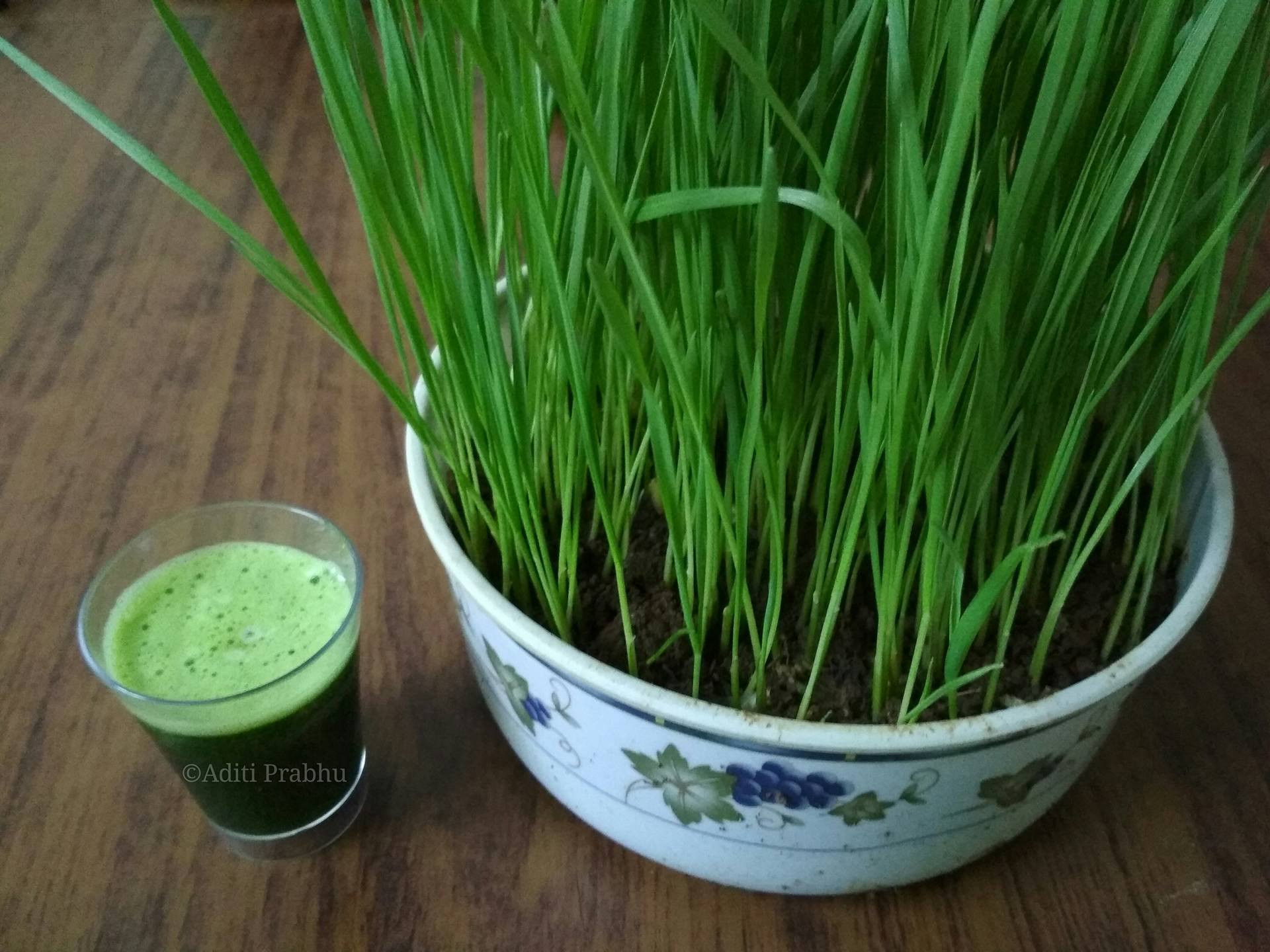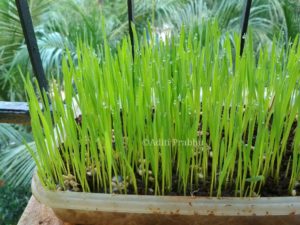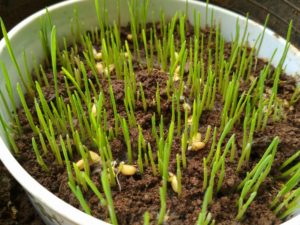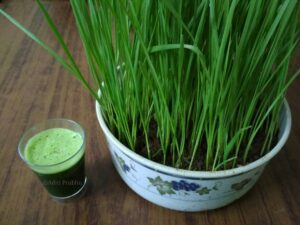Wheatgrass is the young grass of wheat plant-Triticum aestivum belonging to the family of Gramineae. Delicate and lush green, Wheatgrass is a powerhouse of nutrients and also considered as a complete food by many. It contains many essential and non-essential amino acids, vitamin-A, E, K, B Complexes, and minerals like iron, calcium, phosphorus, zinc, copper etc.
Health Benefits of Wheatgrass
- Increases red blood cell count.
- The high chlorophyll level helps in detoxification and helps to oxygenate the blood.
- Boosts immunity.
- Stimulates metabolism.
- Stimulates the thyroid gland.
- Helps to reduce acidity and relieve peptic ulcers, ulcerative colitis, constipation, diarrhea, and other gastrointestinal complaints.
- Detoxification of liver and blood.
- Chemically neutralizes environmental pollutants.
- It can reduce the damaging effects of radiation
- Detoxifies the body of heavy metals.
- Restores the alkalinity of the body.
- Promotes healthy skin and helps in reducing/fighting skin diseases-psoriasis.
Wheatgrass is easily available in the market in the form of tablets, powders, juices and as part of several products. The best are freshly prepared juice from wheatgrass.
Cultivation
Mostly it is bitter to taste but if it is grown properly in indirect sunlight and harvested at the right time it is absolutely sweet and refreshing to taste. It takes about a week to 10 days for the wheatgrass to grow.
It is very simple to grow. All you need are old containers, good soil, homemade compost, and wheat grains.
Soak the wheat seeds for a day or 2. Till then prepare the container in which you are going to grow it. Put the seeds into the soil. Within 2-3 days they look like the image below.
Within another 1-2 days, this is how amazing they look.
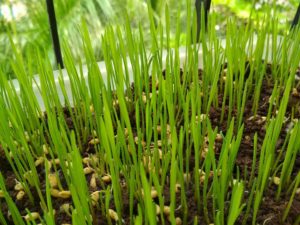 At the end of the week, wheatgrass looks so gorgeous.
At the end of the week, wheatgrass looks so gorgeous.
This grass can be cut and juiced. Juicing increases the availability and absorption of nutrients. All you need is a good mixer or a blender for juicing. Having the juice first thing in the morning is considered to be the best.
Having said all this, I can cause nausea, vomiting, and headaches. Some even have allergic reactions to it. Also, there are not many long-term studies on wheatgrass. Hence consume with caution and preferably under the guidance of a Doctor/ Qualified Nutritionist.
Also, do read about Mayalu/ Malabar Spinach.
References:
- https://www.ncbi.nlm.nih.gov/pubmed/26156538
- https://www.ncbi.nlm.nih.gov/pubmed/16521113
- https://www.ijfans.com/vol2issue4/2.pdf
